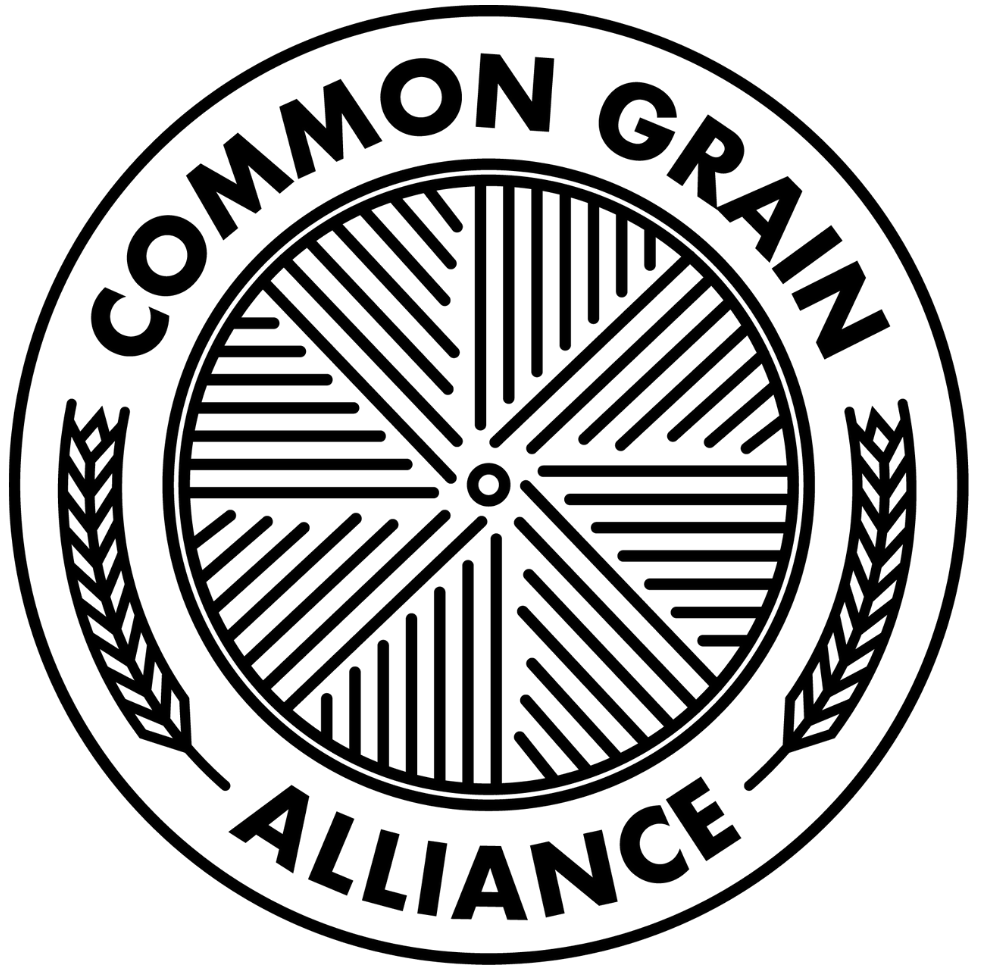This brief synthesizes findings from the 2025 Mid-Atlantic Grain Conference session "Advocating for Regional Grain: Policy, Impact, and Community Perspectives." The briefing aims to inform policymakers and stakeholders about structural barriers encountered by regional grain producers, processors, and craft food and beverage manufacturers in their efforts to expand local and sustainable grain production, processing capacity, and market penetration.
By sharing these perspectives, we aim to catalyze meaningful dialogue among policymakers, industry stakeholders, and consumers about strengthening our regional grain economy.
Introduction
The Common Grain Alliance (CGA) is a collaborative network of 190+ grain growers, processors (millers and maltsters) and end users of grain (bakers, brewers, distillers, chefs, etc.) dedicated to building a vibrant, integrated, equitable, and regenerative grain economy in the Mid-Atlantic region. CGA facilitates access to knowledge, markets, and shared resources like infrastructure, crop genetics, and social capital.
A decentralized food system enhances resilience and supply of fresh food, and localized, value-added agriculture and foods (heirloom, local, artisanal) keep farmland in production and bring prosperity to farming communities. Besides the direct food outputs that form the basis of the mid-Atlantic economy, farms maintain open space, mitigate flood risks, create jobs, support associated businesses, provide a sense of place and community, sustain wildlife, and provide clean water and soil health.
Objectives
Common Grain Alliance’s objectives are to:
Build a vibrant, integrated, regenerative, and integrated regional grain economy in the Mid-Atlantic.
Increase the quantity of grain produced sustainably by diversified farms and sold to local, craft food and beverage businesses.
Create diversified market opportunities for grain producers that allow them to sell to higher-value, regional markets. Promote a paradigm shift from grain as a commodity to grain as a value-added product of local origin and superior quality.
Barriers to Increasing Local Grain Production and Expanding Craft Food and Beverage Businesses
Economic Barriers
Price-scale dilemma: Regional grain producers and processors have not yet reached economies of scale, resulting in higher prices that many processors and consumers find prohibitive. This creates a challenging cycle where growth is needed to lower prices, but higher prices limit growth.
Capital constraints: Small-scale grain farmers and craft processors often lack access to affordable financing options that accommodate their unique business models and longer timelines to profitability.
Technical Barriers
Variety and quality limitations: Regional producers lack access to grain varieties that thrive in local growing conditions with minimal or no synthetic inputs, meet the quality specifications of craft manufacturers, and deliver distinctive flavor profiles to consumers.
Knowledge gaps: Limited technical assistance and research specifically address the challenges of small-scale, diversified grain production and processing for regional markets.
Infrastructure Barriers
Equipment access challenges: Farmers and processors struggle to afford scale-appropriate equipment for farming, grain cleaning, processing, storage, and transportation—with new equipment costs often exceeding potential short-term returns.
Missing middle infrastructure: The regional grain ecosystem lacks sufficient intermediate-scale facilities for aggregation, storage, and distribution that bridge the gap between farm production and craft manufacturing needs.
Value chain disconnects: Fragmented coordination between producers, processors, and end-users creates inefficiencies in matching grain quality, quantity, and specifications with market demand.
Regulatory Barriers
One-size-fits-all food safety regulations: Current food safety frameworks are designed primarily for industrial-scale operations and create disproportionate compliance burdens for small-scale grain processors.
Priorities
Restore federal funding: Support federal programs for marketing, conservation, rural development, local food, sustainable agriculture, and regional food system investment.
Level the playing field: Make federal loan and crop insurance and state conservation programs more accessible to small and diversified farms and specialty crops for fair competition with commodity producers. Ensure size and participant criteria of value-added producer and supply chain investment grant programs are inclusive of small farms and milling, brewing, and malting businesses that are supporting the development of regional food systems.
Fund agricultural research and extension: Grain varieties that are adapted for our climate and region, organic and low-input farming systems, and deliver superior flavor and nutrition for craft food and beverage applications are needed to support a strong regional grain economy. A robust technical assistance and extension system that supports organic grain growers producing for the regional food system is needed.
Ensure scale- and context-appropriate food safety regulation: Ensure that food safety regulations are not onerous for small-scale food and beverage producers that are producing craft products with local ingredients.
Expand Local and Regional Markets: Incentives are needed to open new market opportunities for small farms, mills, malthouses, and other businesses to grow their operations and reach greater economies of scale. This can be done through local purchasing incentives or requirements, including increasing the use of local grains in farm breweries and farmers market bakeries.
Invest in Infrastructure: Access to affordable grain processing equipment, storage, and transportation is a key barrier to increasing locally grown and processed grain products. Investments in building the middle of the supply chain infrastructure are needed to support local grain growers, mills, and malthouses.
Invest in Value Chain Coordination: Invest in programs that connect regional grain stakeholders through strategic infrastructure investments, networking mechanisms, and collaborative planning projects. This can ensure efficient information flow, facilitate coordination in building market demand, and reduce friction in efforts to build the regional grain economy.
Authored May 2025
Francesca Costantino, labella_francesca@yahoo.com
Mark Woodward, markcwoodward@gmail.com
Madelyn Smith, madelyn@commongrainalliance.org

